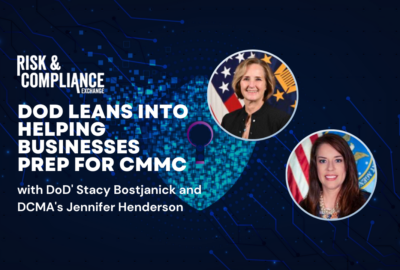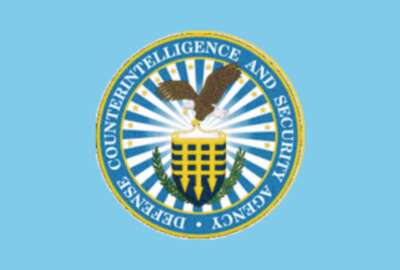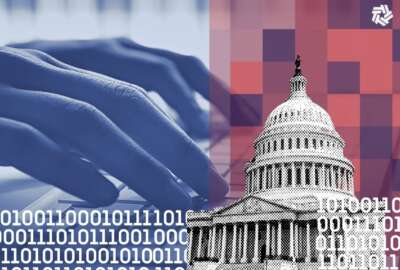When disaster strikes, electronic patient tracking modernizes response
When disaster strikes, one of the biggest challenges facing responders is how to efficiently treat and track those injured. H. Allen Dobbs has made the moderniz...
wfedstaff | April 17, 2015 3:45 pm

H. Allen Dobbs has made the modernization of the process a priority during his career and is now being recognized for his work.
Dobbs oversaw the creation of an electronic system that allows hospitals and doctors to track patients using a barcode system, that contains information about their condition and medical care.
Dobbs, the chief medical officer at the Health and Human Services Department’s National Disaster Medical System, has been named a finalist in the “Career Achievement Medal” category of the Samuel J. Heyman Service to America Medals, more commonly know as the Sammies.
Dobbs joined In Depth with Francis Rose to discuss the work that garnered him the award.
Federal News Radio asked the Sammies finalists to tell us a bit about themselves.
Tell us about your accomplishment
The nomination for which I was chosen as a finalist was for career achievement and the accomplishment that is probably most noteworthy is for the development and successful deployment of an electronic medical record and patient tracking system to be utilized during disasters. Other accomplishments that were noted included development of responder safety and health initiatives and a reorganized medical care capability to provide more life-saving capability in our nation’s response to disasters.
What does this recognition mean to you, and your agency?
This recognition means a lot to me personally as I am at the end of a career of federal service and retiring soon from the U.S. Public Health Service. More importantly, any accomplishments that have been attributed to me were, in fact, the result of the work of a team of dedicated, smart and hard-working federal employees. I think it is very important to recognize that any innovation that occurs in the federal government or other organizations comes as a result of leadership that provides you with three critical components to success: the position from which one can make change; the empowerment to make critical decisions, even those that may carry some measured risk; and the resources needed to be successful. In addition, innovations that are challenging usually require a team of capable and dedicated individuals. So the recognition for the agency really is a testament to great leadership and the support to innovation in addressing the core mission.
What kind of support did you receive?
We had a very limited budget to develop the EMR and patient tracking system. I had a small but very dedicated and expert staff and additional support from selected team members from the National Disaster Medical System (intermittent federal employees) who were the core drivers of the EMR development. My headquarters staff were also instrumental in the responder safety and health initiatives and modernization of the NDMS teams. Again, it was critical to have the support from the assistant secretary of Preparedness and Response and other leaders within our agency to accomplish all of this.
What would you say to fellow federal workers who are striving toward excellence?
The key lessen I think I have learned in the 32 years of federal service is that the resources to accomplish excellence are not always there at the beginning. But it is vitally important to initiate what steps you can towards creating that excellence. Small accomplishments may often be made without waiting for dedicated resources. It is often the small steps taken that are visible results upon which one can build the case for more significant projects and the dedication of resources. And you must eventually gain full support from your immediate leadership if larger projects are to be successful.
What is the driving factor behind how you do what you do?
For me, my early experiences within the Indian Health Service were critical to shaping my own approach and vision in addressing gaps in health care. I saw that despite, or because, the complexity of the health care issues, good data could support the development and execution of effective and efficient solutions to these challenging situations. A couple of examples of this include the use of patient health information that has been proven to support better care of diabetes. By using this information to assist clinicians in managing their patients, overall improvements in the lives of the patients served could be, and are, realized. So striving to find the tipping points for me involved finding the right information that assisted in giving the best care.
What are you most of proud of when it comes to your work?
Recruiting and mentoring the right people for the job. At least for me, that is what ‘paying forward’ in the federal service is all about. Truth be told, every good idea I’ve had has come from some twist of someone else’s idea or a recombination of other’s ideas. But none of that can be executed into a successful product or service without the enthusiastic ownership of the concept by others.
What advice would you impart to other federal employees to help them become better workers?
I would say it is important to be passionate about your work, first of all. Secondly, one must develop patience and appreciation for some of the bureaucratic requirements of federal service. Most of these are time consuming but designed to provide a fair, safe and ethical work environment. As federal workers, ultimately we are paid by the taxpayer and should be held to the highest ethical standards and an appropriate expectation of productivity.
What have been some of your greatest challenges and how have you addressed them?
Probably my greatest challenges have been around how to address health care disparities or gaps in health care. These are ongoing issues which have no easy answers but my approach has been to consider the best strategies to take within my sphere of influence. How to best manage the ‘sphere of influence’ is one of the biggest challenges and I am still a student in this endeavor.
What are your future goals?
I am retiring from the U.S. Public Health Service, effective June 1 of this year. I am planning to take a month or two off to learn how to sleep for more than 5 hours. After that, I am considering work in the private sector or perhaps further work in the federal government. Probably in the health care information technologies.
Meet the rest of the 2012 Sammies finalists
Copyright © 2024 Federal News Network. All rights reserved. This website is not intended for users located within the European Economic Area.





